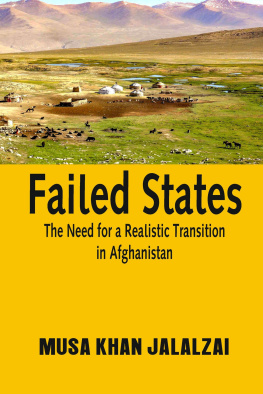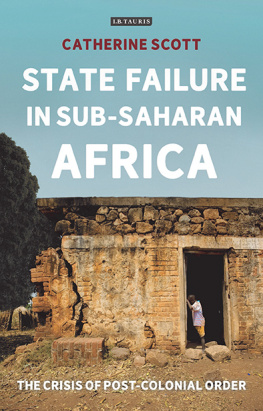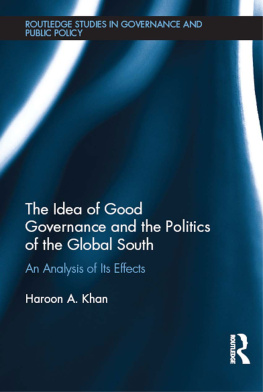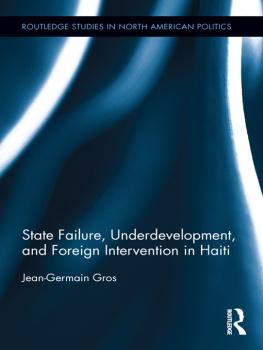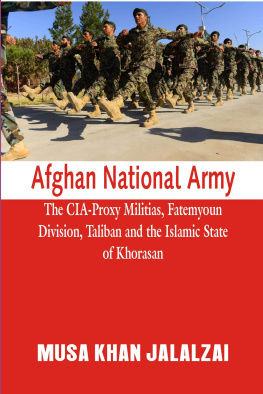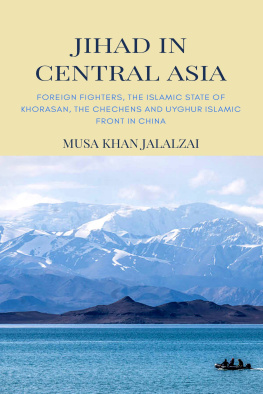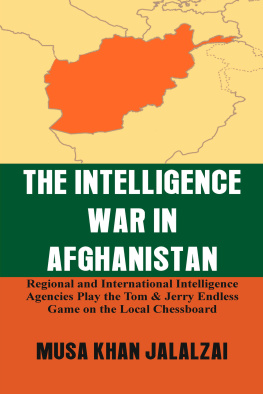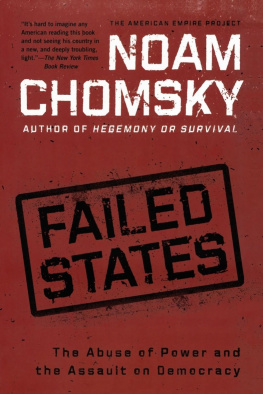Published by
Vij Books India Pvt Ltd
(Publishers, Distributors & Importers)
2/19, Ansari Road
Delhi 110 002
Phones: 91-11-43596460, 91-11-47340674
Mobile: 98110 94883
e-mail:
www.vijbooks.com
Copyright 2020, Author
ISBN: 978-93-89620-19-1 (Hardback)
ISBN: 978-93-89620-21-4 (ebook)
Price in India: 1650/-
All rights reserved.
No part of this book may be reproduced, stored in a retrieval system,
transmitted or utilised in any form or by any means, electronic,
mechanical, photocopying, recording or otherwise, without the prior
permission of the copyright owner. Application for such permission
should be addressed to the publisher.
Failed or failing states cause concern and spread chaos to their neighbours. They are an unquestionable and authentic source of terrorism, organized crime, drugs trafficking, violence, disease, and economic breakdown. Afghanistan is an example of such a troubled state, which collapsed in 1992. The country remained without a functioning state for more than eight years. In 2001, after the US and NATO invasion, an artificial state was established to serve their own interests. They also reinvented artificial institutions; such as the mercenary army, rogue intelligence infrastructure, militias police and corrupt judiciary, and handed over all these incompetent institutions to artificial people (warlords, war criminals, suspected terrorists and extremist) who adopted war as a profitable business. Eighteen years after the US and NATO brutal war, the security and political situation in the country remained irksome, and the artificial Afghan state has been on the brink.
The US army failed to control Afghanistan due to its fighting weaknesses, brutalities, atrocities, Dog-Rape culture, flawed security approach, and sarcastic intelligence infrastructure that never brought Gallus-Gallus to their military command. New York Times, in its recent report (09 December 2019) exposed the real transmogrified face of CIA and Pentagon in the country. The Washington Post also made public a trove of secret US government documents which revealed that the countrys senior civil and military officials put out of sight evidence on how the war had become unwinnable. The documents comprised hundreds of interviews with key figures involved in the almost two-decade-long war and were conducted as part of a federal Lessons Learned project to examine the root failures of US authorities in the conflict-collected by the office of the Special Inspector General for Afghanistan Reconstruction (SIGAR).
What did we get for this $1 trillion effort? Was it worth $1 trillion? said Jeffrey Eggers, a retired Navy SEAL and White House official under the Bush and Obama administration, in another interview, Osama was probably laughing in his watery grave considering how much we have spent. Many officials described a sustained effort by the US government to put out of sight the truth from the American public and Afghan government. Bob Crowley, a US Army colonel who served as a counterinsurgency adviser in Afghanistan said: Every data point was altered to present the best picture possible.
On 9 Dec 2019, Peter Beaumont reported hundreds of confidential interviews with key figures involved in prosecuting the 18-year US war in Afghanistan. Transcripts of the interviews, published by the Washington Post after a three-year legal battle, were collected for a Lessons Learned project by the SIGAR. The 2,000 pages of documents revealed the bleak and unvarnished views of many insiders in a war that costed out $1tn (760bn) and killed more than 2,300 US servicemen and women, with more than 20,000 injured. Tens of thousands of Afghan were killed by the US and NATO forces intentionally and still continues to inflict fatalities on civilian population. John Sopko, the head of SIGAR, told Washington Post about the assessments contained in the project suggested that the American people were constantly been lied to. The documents, retrieved by Washington Post went to federal courts to ask for the interview transcripts, identify only 62 of the people interviewed. A total of 366 other names were redacted after SIGAR insisted they should be treated as whistleblowers and informants.
The Afghan state remained shattered and failed due to the inattention of international coalition. In modern intellectual forums, most of the failed-state discourses are centered on the lack of a states capacity to carry out the basic services for which it is responsible, such as the rule of law, good governance, and effective border control against external threats. A characteristic of state failure presents a quite different picture in Europe and Asia. The present-day states are facing countless challenges due to the expanding matrix of terrorism, radicalization, economic downfall and internal security turmoil. The fluctuation of financial market also causes a different type of societies and classes of citizens. However, the present Afghan, Somali, Sudanese and Iraqi states present the same picture of state failure. Sunni-Shia conflict and civil war divided Iraq on sectarian bases. In Syria, foreign involvement, and sectarian confrontations tortured state institutions with the sticks of corruption, sectarianism and civil war. Increasingly, weak state legitimacy is understood to be a key defining characteristic of fragility. States that fail to meet basic needs and to keep societal expectations and state capacity in equilibrium can also fail to establish reciprocal state-society relations or create a binding social contract. Expert Hideaki Shinoda has painted a brilliant picture of failed states and state-building process and argues that armed conflict and civil war cause state failure, while state without social foundations cannot sustain:
There are usually many fragile elements, including armed conflicts, in such a process. In the process, we will be able to see a long-term process of state-building, which covers conflict-prone states in Africa, the Middle East, and Asia. Developing countries, de-colonized in the process of the formation of world international society, constitute the conflict zone of the contemporary world, stretching from Africa to South East Asia. The fragility of these states can be explained in terms of the rapid universalization within an international society of sovereign nation-states in the 20th century after the geographical expansion of European international society in the 19th century. Armed conflicts, seen from a historical perspective, are not occasional appearances of holes in a once-complete international society, but rather the constant appearances of hidden structural tasks in our world international society. There are similarities and differences between state formation in modern times and state-building in the contemporary world. Nation-states, including modern European states and latecomers, such as the United States and Japan, overcame the social structure of internal armed conflicts by joining an international society, where they exposed themselves to compete with other states. Until the 19th century, competition among nation-states was not just a sad reality; it was part of nation state-building itself. In contrast, state-building activities in post-conflict societies in the contemporary world are promoted by international assistance. Armed conflicts tend to take place in geographically specific areas where fragile states are accumulated. First of all, most of them occur as internal conflicts in states that became independent in the latter half of the 20th century on the tide of decolonization. Namely, the conflicts have been mainly happening in Africa, the Middle East, and South Asia. Their social foundations to sustain sound governmental functions have been rather weak and in fact, have been fragile since their independence. There are some more specific trends. Southern Africa and South East Asia were significantly volatile during and shortly after the Cold War. But these areas are now comparatively stable. On the other hand, the center of the worlds conflict zone is now the Middle East, especially since the Arab Spring. Africa, especially North Africa and the Sahel, remains volatile, even though African states are performing comparatively better now than previously.

